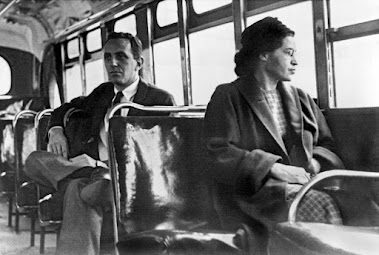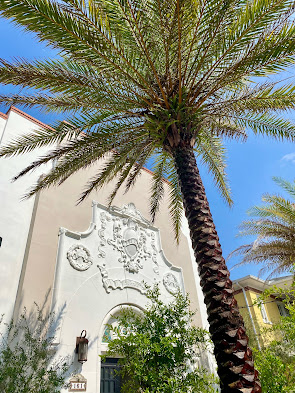St. Augustine, Florida
Thursday, March 24, 2022
The Lincolnville Museum and Cultural Center, formerly known as Excelsior Museum and Cultural Center is an African American history museum located at 102 Martin Luther King Avenue. It is located in the former Excelsior High School, St. Augustine's first black public high school. The building is held in the neighborhood known as Lincolnville which was originally a distinct town but is now a piece of the city of St. Augustine. It was originally settled by freed black slaves after the American Civil War.
The museum was primarily founded by Otis Mason, an Excelsior High School alum, who in 1984, became the first Black superintendent of the St. Johns County School District. The main focus of the museum is on the history, culture, and contributions of African Americans in the St. Augustine area.
The mission of the Lincolnville Museum and Cultural Center is "to preserve, promote and perpetuate over 450 years of the African American story through the arts, educational programs, lectures, live performances and exhibits".
https://www.lincolnvillemuseum.org/
Exterior Photo 1
Exterior Photo 2
Artifact Photo 1
The photo above shows a book all about Frank B. Butler. He was an African American businessman who originally established a beach resort for African Americans during the segregation era. He had worked in Fernandina Beach, St. Augustine, and then in the Lincolnville neighborhood where he had established his own market as well as a real estate business. He had acquired land on Anastasia Island which stretches between the Atlantic Ocean and Matanzas River. That is the location of the beach area resort for African Americans. It became known as Butler Beach. In Lincolnville, he ran the Palace Market next to his home at 87 Washington Street.
Butler was born in Du Pont, Georgia in 1885. He moved to Fernandina Beach in 1902 and worked for a Mr. Salvador who moved to St. Augustine and opened a fish market. Butler worked for him as a butcher in Snyder's Market. After Frank B. Butler's death, the park that he worked on was named Frank B. Butler County Park.
Artifact Photo 2
Willie Galimore "The Wisp" was an American football halfback for the Chicago Bears from 1957 to 1963. He was born March 30, 1935, and died July 27, 1964. Galimore attended Excelsior High School in St. Augustine and went to college at Florida A&M University. He is a member of the College Football Hall of Fame. In his football career, he possessed incredible speed and lateral movement. He was cited to be one of the fastest running backs in professional football. Continuing on with his football career, in a documentary shot by NFL films, it was said that Galimore was probably the last great find before NFL scouting became sophisticated. Due to his skills as a halfback, he was drafted in the fifth round of the 1956 NFL draft.
In Galimore's last visit to his hometown in St. Augustine, he participated in the St. Augustine movement during the Civil Rights Movement. He had become the first Black person who was able to register as a guest at the Ponce de Leon Hotel. His civil rights activism is honored with a Freedom Trail marker at his home at 57 Chapin Street in St. Augustine.
At age 29, Galimore was killed in an automobile accident on July 27, 1964, in Indiana. His number 28 was then retired by the Chicago Bears. Galimore's life will forever be spoken about in St. Augustine.
Image in Conversation #1
https://www.notarowindows.com/famous-front-doors-in-tv-films/matilda-the-chokey-front-door/
The clip above is of the chokey in Ms. Trunchbull's office from the movie Matilda. Closely related to an iron maiden, the chokey is designed to be so narrow that no one can sit or squat while in it. It is filled with glass sticking out of the walls and nails on the door. The device was used to torture anyone who broke the rules. It is basically a torture device.
The chokey ties into what I saw at the Lincolnville Museum and Cultural Center. When you first walk through the door, you see the obelisk created for the Obelisk Art 450 Tour of Compassion. It used to "pay tribute to the 450th anniversary of the Nation's Oldest City and promoted a legacy of compassion in St. Augustine". The Obelisk that won the competition was created by Joe Segal and it "represents the chief of a tribe and the nails and shards he was imbedded with symbolize the trials and hardships that his tribe had to endure". It also stated, "If Freedom, Democracy, Human Rights and Compassion were not under attack, the constitution would not be needed". The look of the object reminded me immediately of the chokey because it looks as if it is a device to torture people even though in real life, it is a symbol of paying tribute. It correlates with the hardships the black people of St. Augustine and the world had to endure.
Image in Conversation #2
https://www.britannica.com/event/Montgomery-bus-boycott
As most of us know, above is a picture of the Montgomery Bus Boycott. This boycott was a civil rights protest during the period in which African Americans refused to ride city buses in Montgomery, Alabama, to protest segregated seating. The boycott took place from December 5, 1955, to December 20, 1956.
Just a couple days before the boycott began, Rosa Parks, an African American woman, was arrested and fined for refusing to give up her seat to a white man. She was commuting home from her job at a local department store. She was seated in the front row of the "colored section", but when the white seats filled, the driver asked Parks and three others to vacate their seats, but she refused.
This political and social protest against the policy of racial segregation in the public transit system was a foundational event in the civil rights movement in the United States. This event ties into the peaceful protests that happened in St. Augustine such as the Woolworth lunch counter sit-in. In July 1963, the St. Augustine Four started a sit-in protest at Woolworth's lunch counter in St. Augustine. The group along with several others were arrested and taken to jail. These peaceful protests were done to try and get segregation to go away and eventually they succeeded.
Literature in Conversation
Tying into a previous post, I had talked about the Luako and a crossed-out section. Well, another section stuck out to me which is "Despite the nurse midwives' creditable record of services, their role in assisting with home births in Guam has disappeared, owing to a combination of factors such as development of the U.S. medical care model, the end of midwifery training, new licensure requirements, increased numbers of physicians, and then opening of new hospital facilities. The focus on the birthing process shifted away from families and home to an institutionalized medical setting " (Perez). This section focuses on how the jobs of individuals got taken away because of the improvements in another country. It shows how there was discrimination amongst the individuals who were not a part of the U.S. medical care system. The crossing out displays a forgotteness, Guam individuals were just erased and in the past. The midwives had creditable records but they were not seen as good enough. Their role in the world disappeared.
Creative Component
https://www.history.com/news/bold-women-who-changed-the-world
This image displays 10 underappreciated world-changing women.
1. Sybil Ludington: The Female Paul Revere
2. Claudette Colvin: Teenaged Civil Rights Activist
3. Jane Addams: Pioneer for Social Change
4. Hedy Lamarr: Invented Tech Behind Wi-Fi
5. Rosalind Franklin: Revealed DNA's Structure
6. Babe Didrikson Zaharias: First Female Sports Star
7. Sojourner Truth: A Voice that Changed a Nation
8. Jeannette Rankin: Broke Barriers Before Women Could Vote
9. Chien-Shiung Wu: Disproved a 30-year Old Law of Nature
10/11. Marsha P. Johnson and Sylvia Rae Rivera: LGBTQ Activists Who Dared to be Themselves












No comments:
Post a Comment